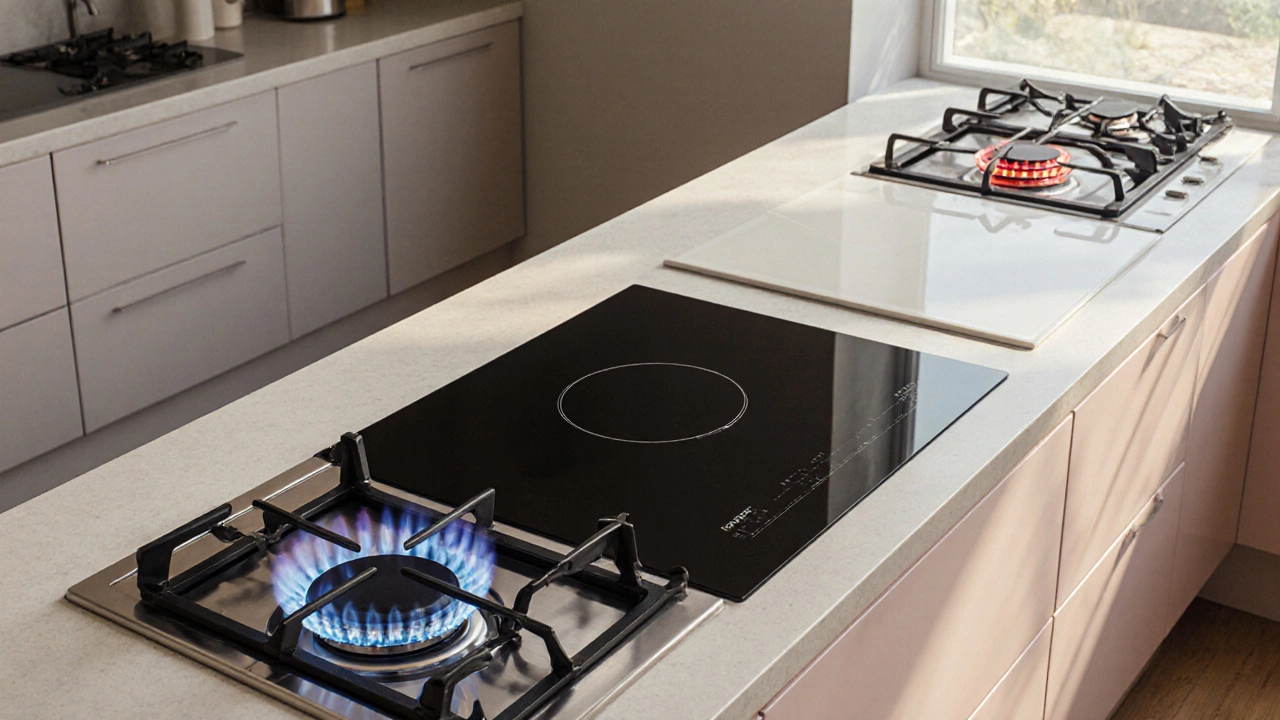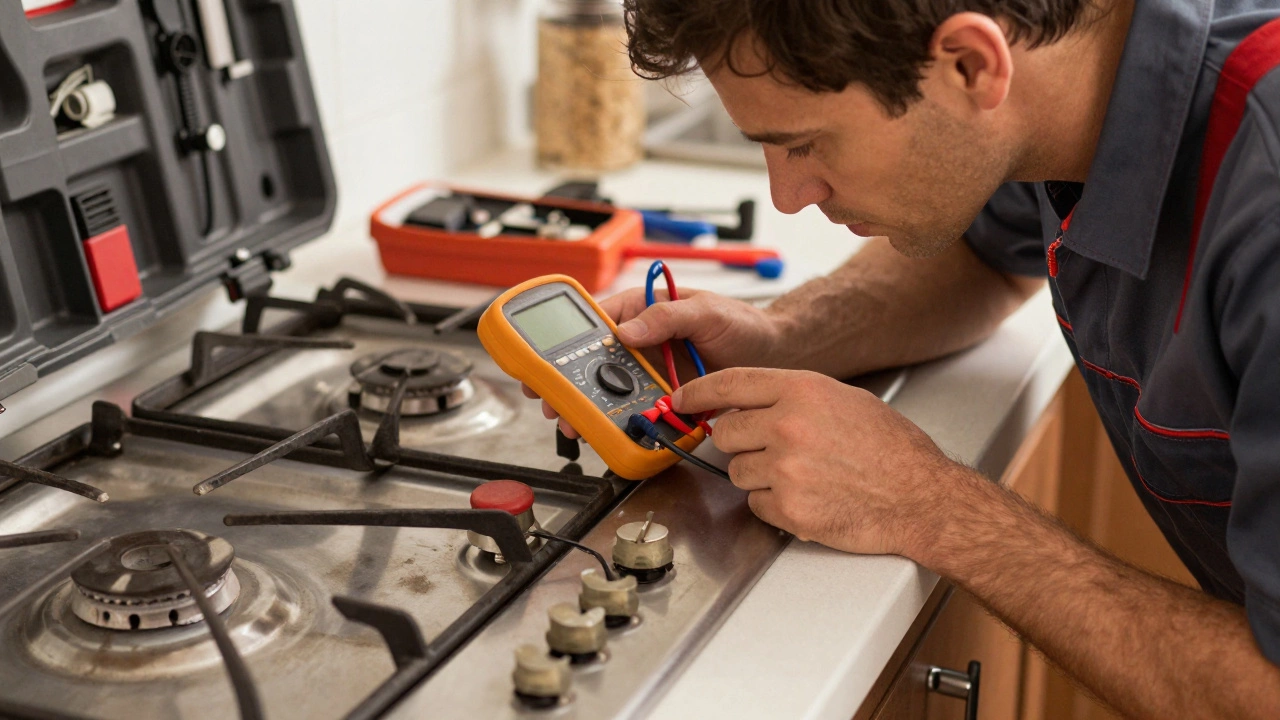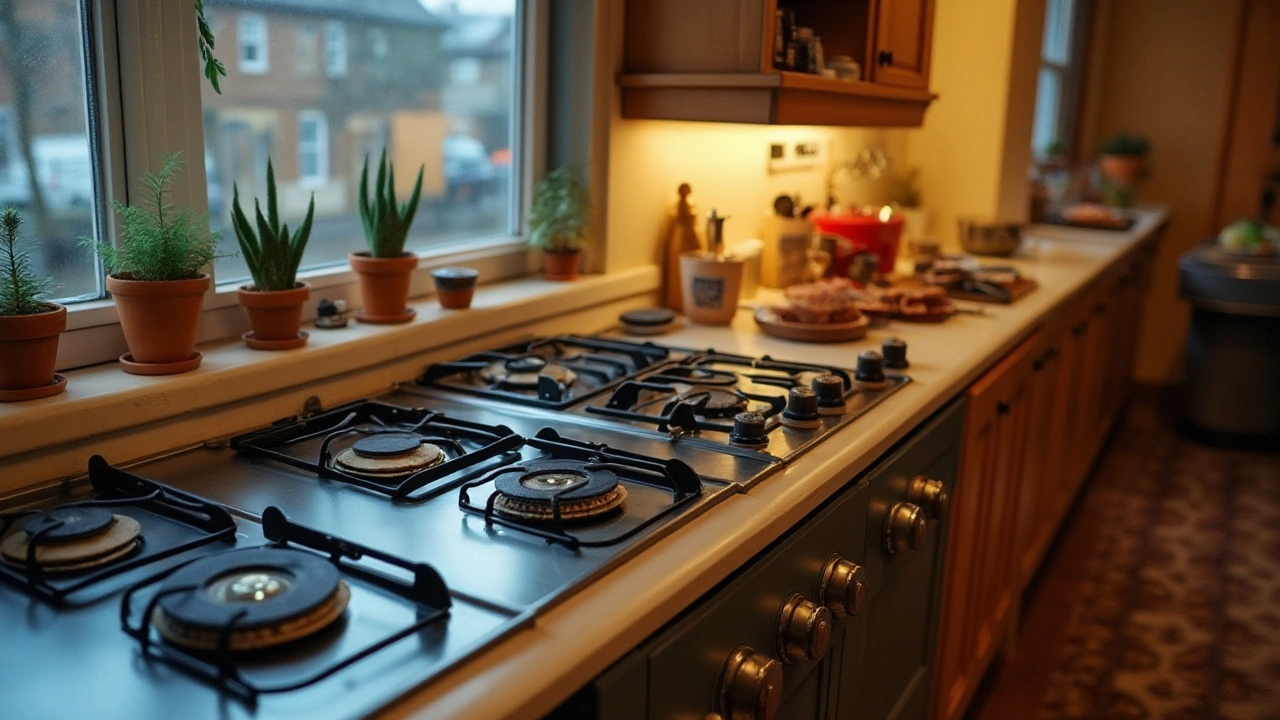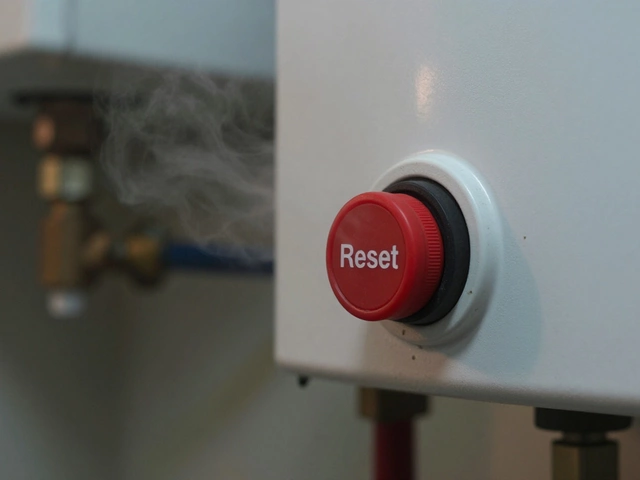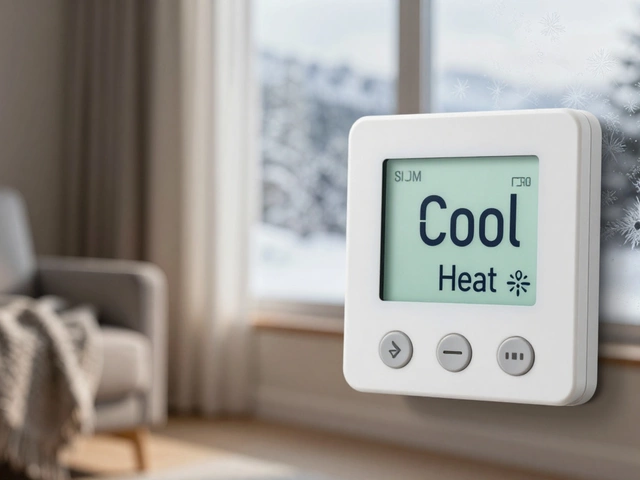Hob Lifespan Estimator
Estimated Lifespan
When it comes to your kitchen, a hob is the cooking surface with burners or heating zones that lets you prepare meals is the unsung hero of daily meals. You probably never think about how long it will last until a burner clicks off or the surface starts to crack. This guide breaks down exactly how many years you can expect from a hob, which factors speed up wear, and what you can do to squeeze out every extra month.
What a Hob Actually Is
A hob (sometimes called a cooktop) sits on top of your kitchen worktop and provides the heat needed for pots and pans. It can be powered by gas, electricity, induction, or a combination of these. While the term "hob" is common in the UK and Oceania, many people in the US refer to it as a "stovetop". Regardless of the name, the basic job stays the same: delivering reliable, controllable heat.
Different Types of Hobs and Their Typical Lifespan
Not all hobs are built the same, and their expected life varies by technology.
- Gas hob: Uses open flames fed by a gas line. Durable, but the burners and seals can rust. Average life is 8‑12 years.
- Induction hob: Generates heat through electromagnetic fields. No open flame, so fewer moving parts. Expect 12‑15 years if you keep the surface clean.
- Ceramic hob (electric): Smooth glass‑ceramic top with heating elements underneath. Sensitive to scratches; typical life 10‑13 years.
- Electric coil hob: Classic coil elements that glow red. Simple design but can suffer from coil fatigue. Usually lasts 7‑10 years.
These ranges are averages; your actual experience may be better or worse depending on usage patterns and upkeep.
Factors That Influence Hob Longevity
Understanding what wears a hob out helps you avoid premature failure. Here are the big ones:
- Heat cycles: Constantly turning the heat up and down stresses thermostats, heat sensors, and the heating element itself.
- Spills and stains: Acidic or sugary spills left to harden can corrode metal parts or etch ceramic surfaces.
- Improper cookware: Using warped pans or non‑compatible induction pans can cause uneven heating and damage the surface.
- Power surges: Sudden spikes in electricity can fry electronic control boards, especially on induction and ceramic models.
- Installation quality: Poor gas connections or loose electrical wiring often lead to leaks or short‑circuits that shorten life.
By keeping these points in mind, you can make small adjustments that add years to your hob’s service.
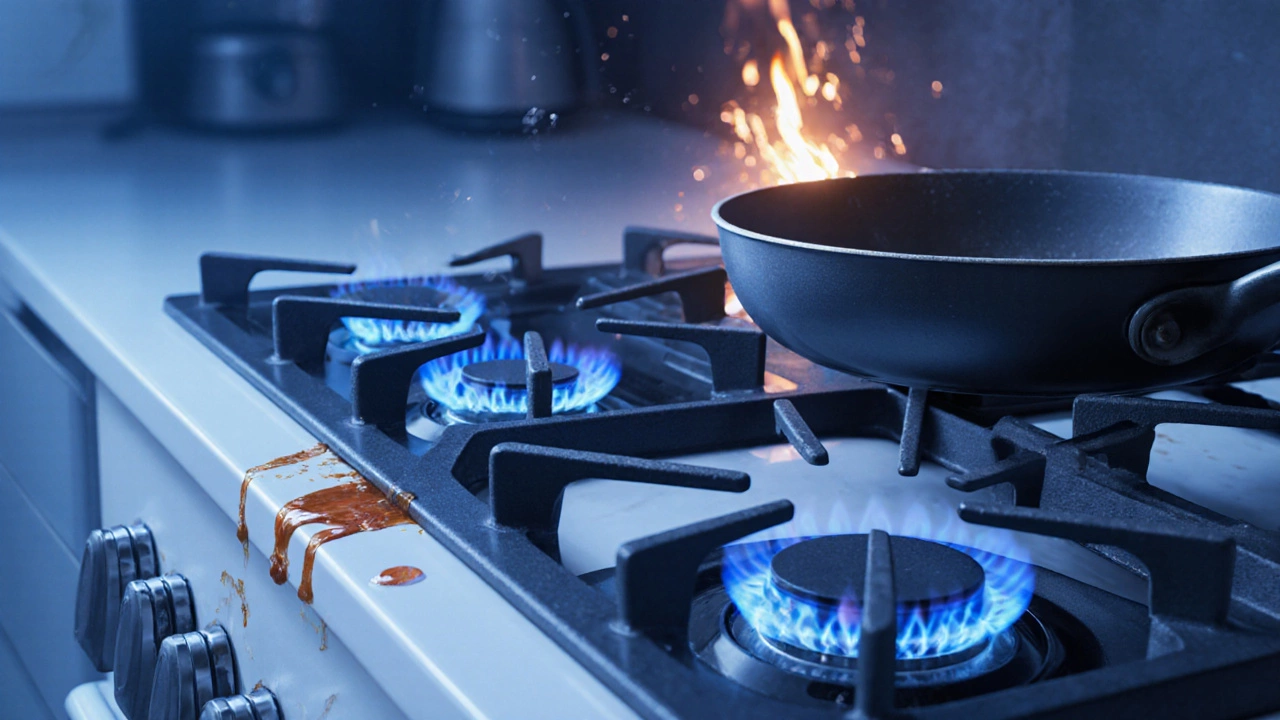
How to Spot When a Hob Is Near the End of Its Life
Even with the best care, every hob will eventually show signs of aging. Look out for these red flags:
- Burner flames that flicker or sputter (gas hob).
- Surface that no longer heats evenly, or has cold spots (induction or ceramic).
- Cracks in the glass‑ceramic top that spread over time.
- Repeated error codes on the control panel.
- Unusual smells like burning plastic or gas.
If you notice two or more of these symptoms, it’s time to schedule a professional check.
Maintenance Tips to Extend Your Hob’s Life
Simple habits can push a hob well beyond its average lifespan. Try the following routine:
- Wipe spills immediately with a soft, non‑abrasive cloth.
- Use cookware that matches the hob’s specifications - flat‑bottomed pans for induction, proper size burners for gas.
- Run the self‑clean cycle on ceramic hobs (if available) once every few months.
- Check gas connections annually for leaks using a soap‑water test.
- Install a surge protector for electric or induction models to guard against voltage spikes.
These steps don’t cost much, but they add up in saved repair bills and extra years of cooking pleasure.
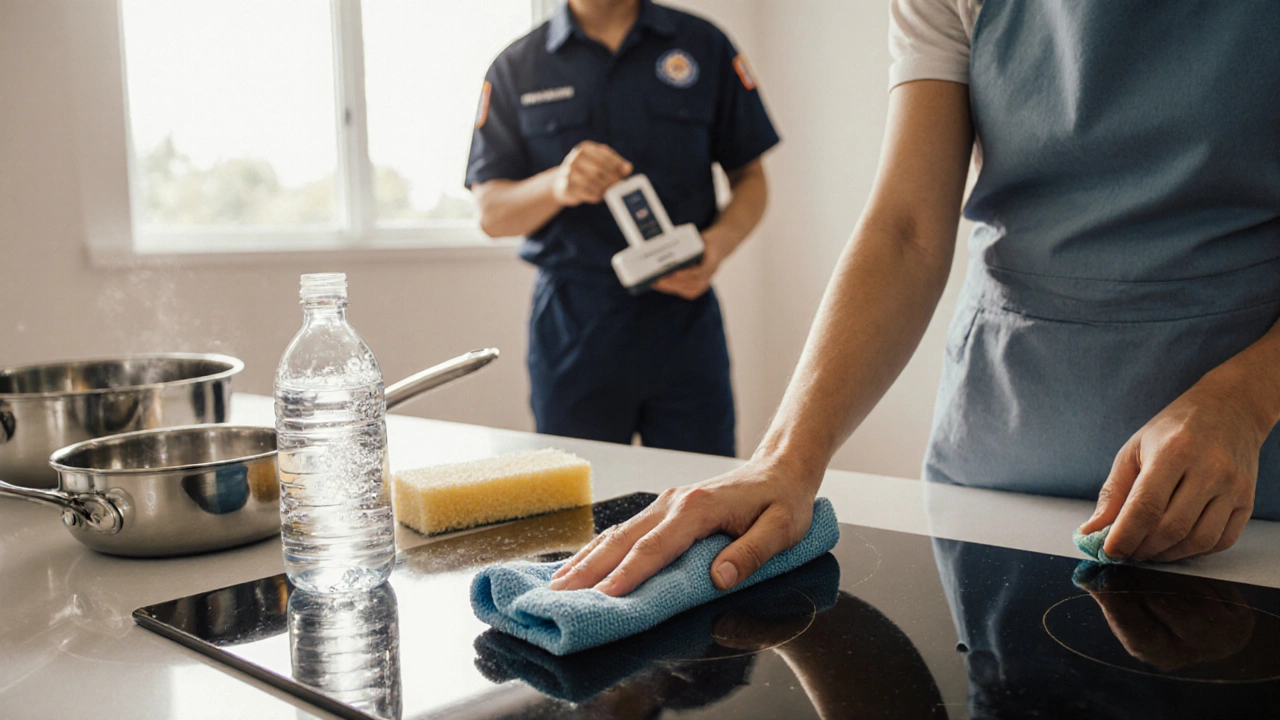
When to Call a Professional
DIY fixes are great for routine cleaning, but certain issues require a qualified technician. Call a pro if you encounter:
- Persistent error codes after a reset.
- Visible damage to internal wiring or gas pipes.
- Failed ignition or a complete loss of heat.
- Cracks that compromise the structural integrity of the glass‑ceramic surface.
A certified repair service can assess whether the hob is worth fixing or if replacement is the smarter move.
Quick Comparison of Hob Types
| Hob Type | Typical Lifespan | Key Maintenance | Best For |
|---|---|---|---|
| Gas hob | 8‑12 years | Check burner seals, clean igniters | Fast heating, visual control |
| Induction hob | 12‑15 years | Wipe surface, use compatible pans | Energy efficiency, precise temp |
| Ceramic hob | 10‑13 years | Avoid scratches, run self‑clean | Sleek look, even heat |
| Electric coil hob | 7‑10 years | Check coil integrity, replace worn coils | Budget‑friendly, simple repair |
From the table you can see that the hob lifespan really hinges on technology and how you look after it.
Frequently Asked Questions
How long should a typical hob last?
Most hobs fall between 8 and 15 years, with induction models usually lasting the longest if kept clean.
Can I repair a cracked ceramic surface myself?
No. Cracks compromise safety and performance. Replace the glass‑ceramic panel or the whole hob.
Do gas hobs need regular professional servicing?
A yearly check of gas lines and burner seals is recommended. A qualified technician can spot leaks early.
Why does my induction hob show an error code?
Common causes are unsuitable cookware, overheating, or a power surge. Reset the unit, then test with a compatible pan.
Is a surge protector worth the cost for an induction hob?
Absolutely. A surge protector can prevent costly electronic board failures caused by voltage spikes.
